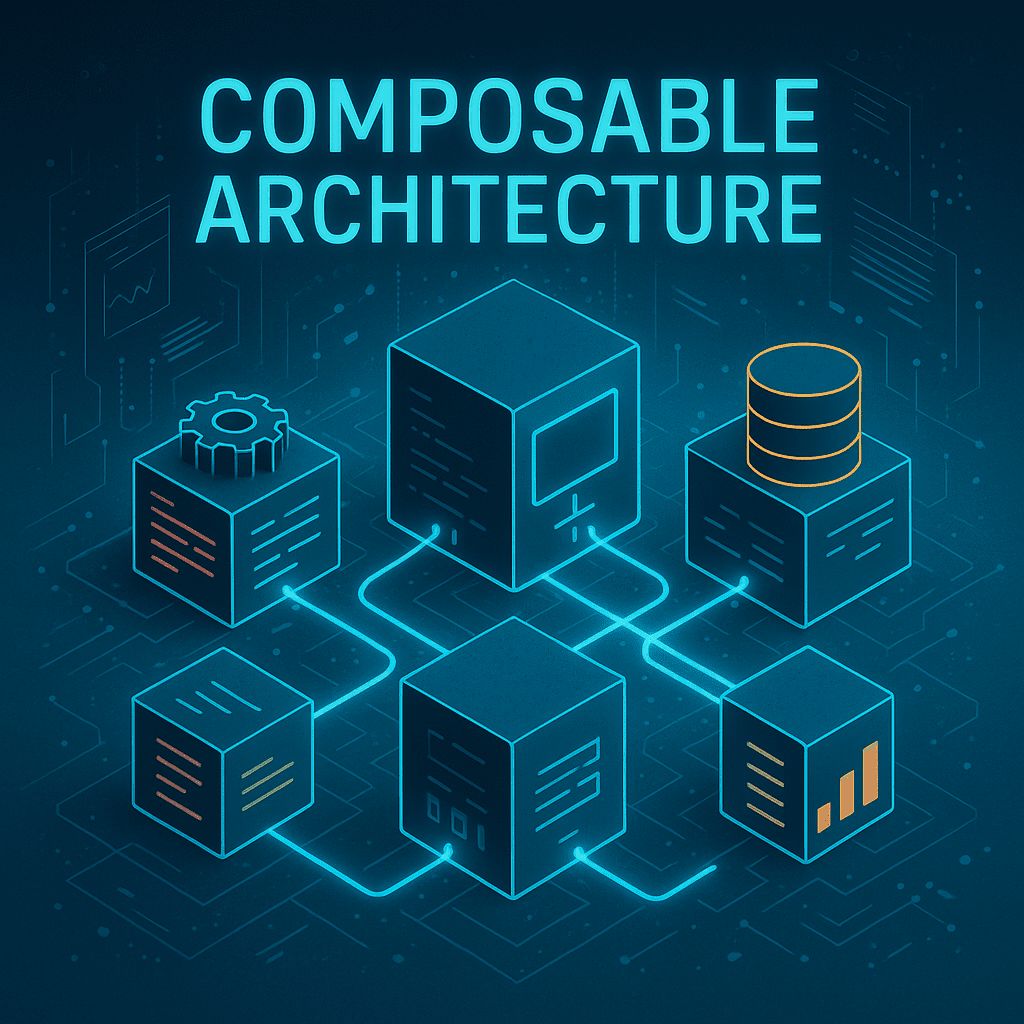The modern Software as a Service (SaaS) industry is rapidly moving away from rigid, all-in-one platforms toward flexible, plug-and-play systems. This shift is powered by Composable Architecture, a design philosophy that is fundamentally changing how SaaS products are built, scaled, and delivered to customers or directly to businesses.
At its core, Composable Architecture is the strategy of creating software applications by assembling independent, interchangeable, and reusable components. Instead of building a single, massive piece of software (a “monolith”), developers use small, specialized building blocks that can be easily connected, updated, or swapped out without disrupting the entire system. Think of it as moving from a single, unmodifiable prefabricated house to building a structure with high-quality, standardized LEGO blocks.
The Monolith Problem: Why SaaS Needed Composability
To truly grasp the value of composability, we must look at the limitations of the traditional monolithic architecture that many first-generation SaaS companies relied on:
| Characteristic | Monolithic Architecture | Composable Architecture |
| Structure | A single, tightly-coupled codebase. | Independent, loosely-coupled modules (microservices). |
| Deployment | Changes to one feature require rebuilding and redeploying the entire application. | Each module can be developed, tested, and deployed independently. |
| Scaling | Must scale the entire application, even if only one small function is under load. | Scalability is granular; only resource-intensive modules are scaled up. |
| Innovation | Slow and risky; adopting new technology requires a massive overhaul. | Fast and low-risk; allows for best-of-breed tools to be plugged in via API. |
A failure in one part of a monolith could bring down the entire system, making updates slow and innovation risky. Composable architecture solves this by promoting modularity and autonomy.
The Building Blocks of Composable SaaS
Composable Architecture is less a specific technology and more a holistic approach that relies on several key pillars to achieve its flexibility:
1. Microservices
These are the foundational components of a composable system. A microservice is a small, autonomous service that performs one specific business function (e.g., a “Billing Service,” an “Inventory Service,” or a “User Authentication Service”).
- Decoupling: By isolating functions, a failure in the Billing Service doesn’t affect the rest of the application, ensuring fault isolation and system resilience.
- Technology Diversity: Development teams can choose the best programming language or database for each individual microservice, rather than being locked into a single technology stack for the whole product.
2. API-First Design
The API is the connective tissue of composable architecture. Every module is built to communicate with other modules and the outside world only through clear, standardized APIs.
- Interoperability: This approach ensures that any component—whether internal or external (third-party)—can be seamlessly “plugged in” as long as it adheres to the defined API standards.
- Headless Capability: The focus on APIs allows the backend functionality to be completely separated, or “headless,” from the user interface (the “head”). This is crucial for modern applications that need to deliver functionality across a mobile app, a web portal, a smart device, or an external partner system.
3. Packaged Business Capabilities (PBCs)
Coined by industry analysts, PBCs are the business-centric abstraction of microservices. A PBC is an encapsulated software component that represents a complete business function that is recognizable to a business user (e.g., a “Shopping Cart,” a “Client Portal,” or a “Document Editor”).
- Reusability: PBCs can be reused across different projects or customer configurations, accelerating the time-to-market for new features and reducing development costs.
Core Benefits for SaaS Providers and Customers
The adoption of a composable approach offers transformative advantages for SaaS companies and their users:
Enhanced Agility and Time-to-Market
By utilizing reusable components and independent microservices, teams can develop, test, and deploy new features or updates significantly faster. This agility allows the SaaS vendor to respond almost instantaneously to market changes or competitive threats, ensuring the product is always up-to-date and relevant.
Granular Scalability and Cost Optimization
In a monolithic system, a spike in one area (like API calls) required scaling the entire application, which is wasteful. With composability, the provider can scale only the specific microservice experiencing high load, dramatically optimizing cloud resource utilization and reducing infrastructure costs.
Extreme Customization and Future-Proofing
Composable architecture empowers SaaS vendors to create highly tailored solutions for specific customers or industry verticals by mixing and matching best-of-breed internal and third-party PBCs. Furthermore, if a core component becomes obsolete, it can be swapped out with a newer, better technology without any ripple effect on the rest of the system, essentially future-proofing the application.

